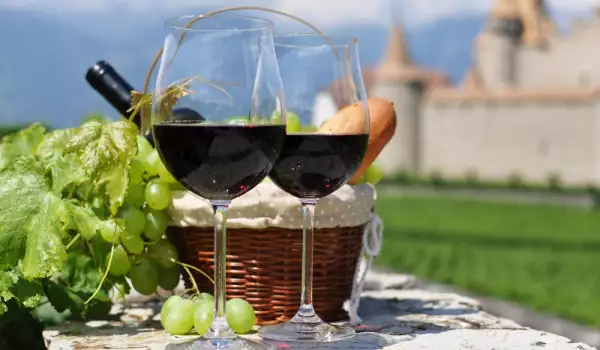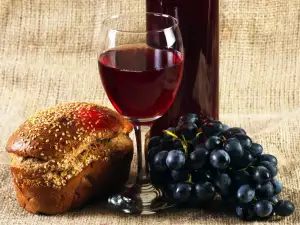Bordeaux is a French wine made in the emblematic city of Bordeaux, splayed on both shores of the Garonne river. Bordeaux is one of the most famous winemaking centers in the world. There they produce wines with a certified designation of origin. The wine fields stretch considerably farther and wider than those in Germany and California. The wines produced there are predominantly red. Of course, there are other varieties. They can be dry, dessert or sparkling. Bordeaux, regardless of whether it is red or white, is a blend. In it you will pick up hints of Cabernet Sauvignon, Cabernet Franc, Merlot, Carmenère, Sémillon, Sauvignon Blanc and others.
The enormous vineyards are a distinguishing characteristic of the city of Bordeaux. They fan out over flat areas and enjoy a soft climate. The favorable conditions do not allow the vines to freeze during the winter or dry up during the summer. Thus, the vineyards of Bordeaux relish in a delicate and humid spring, which lets them develop quickly. If everything else is right with the plantations, they bloom in July. However, fall may present a problem for the harvest. If it is excessively wet it can endanger some of the varieties in the region.
The soils found there are also of great significance to the proper development of the vines and the yielding of a rich harvest. On the western shore, they are gravelly, mixed with sand and moderate amounts of clay. They are distinguished by excellent drainage and are relatively warm. The soils on the eastern shore are composed of limestone, clay, gravel and other substances. They are cooler.
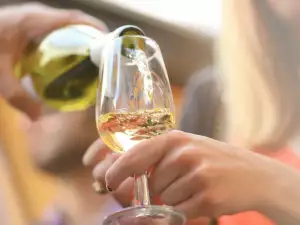
History of Bordeaux
The wine culture has been prevailing in Bordeaux for many centuries. Ancient chronicles reveal that vineyards were grown and wines produced there as early as Roman times. Unfortunately there isn't much information about these processes after the decline of the Roman Empire. Other highly detailed accounts date to the 20th century. They provide evidence that winemaking grew into an ever more significant element of the local economy.
A momentous event for the city of Bordeaux was the marriage between Henry Plantagenet, future king of England, and Eleanor of Aquitaine. Eleanor brought a large territory of France as dowry - Bordeaux included. Because of this marriage, Bordeaux was under English rule for an entire 3 centuries, which however did have a positive influence on the winemaking. One other event in the history of the city had an effect on the vineyards. In the 17th century, they drained the marshes around Médoc and planted the prominent grape varieties.
Production of Bordeaux
Production of Bordeaux is no easy task. If we follow the traditional method of wine production, first the fruits are picked, then placed in wood or steel drums where fermentation takes place. This takes about 10 days. After malolactic fermentation occurs, the material is transferred to wooden vats. The unique thing here is that the blending of the various varieties is done right before the grape elixir is bottled. Afterward, the wine mixture is aged directly in the bottle.
Characteristics of Bordeaux
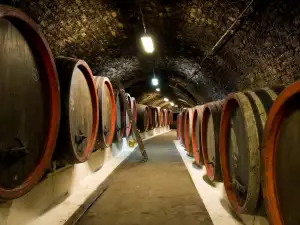
Traditionally, Bordeaux wines are a blend. For red wines of this type, the varieties included are for example Carmenère, Malbec, Petit Verdot, Cabernet Franc, Cabernet Sauvignon, Merlot. For the white wines, we have Sauvignon Blanc, Muscadelle and Sémillon. The red ones have a potential for aging. They are characterized by a sophisticated aroma and softness.
The full-bodied and saturated aromas have the ability to enthrall any true grape elixir enthusiast. On the flip side, white wines are delicate and fresh. In them one may notice flavorful nuances and an unobtrusive acidity. Bordeaux wines are protected by a designation of origin. This means that a wine carrying this name can only be prepared in that city and under specific conditions.
In Bordeaux there are 57 protected designations of origin. They fall into several main groups. The 1st one is Bordeaux Supеrieur. Grapes of old vines belong to it. The distinct trait here is that the wine must age about one year before it is put on the market. The 2nd group of wines is called Cotes de Bordeaux. They are full-bodied and strong red wines in which the Merlot plays a crucial role.
The 3rd group is Medoc and Graves. The wines belonging to this group can be red or white. The red ones can age longer. They include Cabernet Sauvignon and Merlot. The white grape elixirs of this group are dry and semisweet. Another known group is Saint-Emilion, Pomerol and Fronsac. In it we find wines that are soft and refined. The next group contains dry, white wines, prepared on the territory of Gironde. The 6th group is home to sweet, white wines. These can be either sweet or semisweet.
Serving Bordeaux
When serving wines made in Bordeaux, we must take their type and age into consideration. In any case, it is good for them to be slightly cooled before serving - to about 50°F (12°C). For sweet white wines, the temperature can be even lower. For red wines, the temperature needs to be about 50°F (12°C) if they are lighter and about 60°F (16°C) if they are heavier.
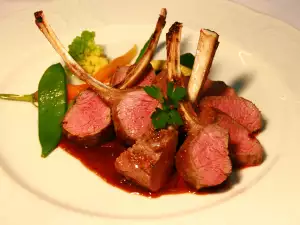
Wines produced in Bordeaux are served in special glasses of the same name. It is tall and voluminous. You can recognize it by its slightly broader bowl. Towards the top, it narrows just as gradually. The Bordeaux glass reveals the characteristics of aged wines most prominently. It is best to decant the wines before consumption. The structure of this type of glass allows for the aromas to be carried up and for the taster to feel the complex scent.
When choosing foods for your Bordeaux, take its type into consideration. If it is red, dishes with veal, beef, chicken or duck go best. The dishes can be heat treated in different ways. If the wine is well aged it can be combined with any type of game. Red wines combine excellently with semi-hard cheeses such as cheddar, Gouda, Edammer and others. If you have white wine on your dining table, combine it with light meat, white fish, crabs, mussels or shrimp. You can also prepare an omelette.
